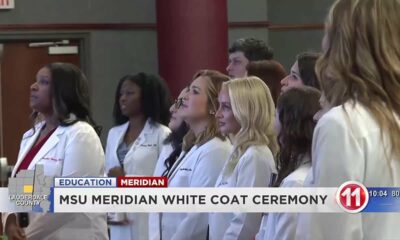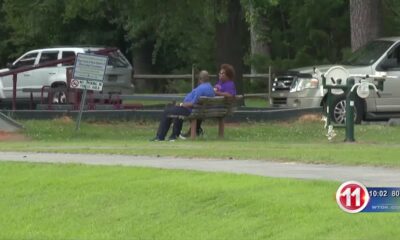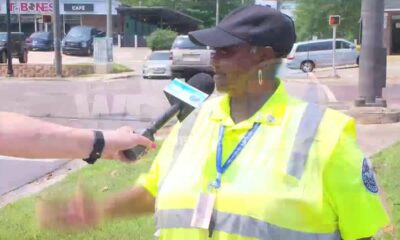Kaiser Health News
KFF Health News’ ‘What the Health?’: The Open Enrollment Mixing Bowl
Thu, 19 Oct 2023 18:40:00 +0000
The Host
Julie Rovner is chief Washington correspondent and host of KFF Health News' weekly health policy news podcast, “What the Health?” A noted expert on health policy issues, Julie is the author of the critically praised reference book “Health Care Politics and Policy A to Z,” now in its third edition.
Autumn is for pumpkins and raking leaves — and open enrollment for health plans. Medicare's annual open enrollment began Oct. 1 and runs through Dec. 15. It will be followed shortly by the Affordable Care Act's annual open enrollment, which starts Nov. 1 and runs until Jan. 15 in most states. But what used to be a fairly simple annual task — renewing an existing health plan or choosing a new one — has become a confusing, time-consuming mess for many, due to our convoluted health care system.
Meanwhile, Ohio will be the next state where voters will decide whether to protect abortion rights. Those on both sides of the debate are gearing up for the November vote, with anti-abortion forces hoping to break a losing streak of state ballot measures related to abortion since the 2022 overturn of Roe v. Wade.
This week's panelists are Julie Rovner of KFF Health News, Joanne Kenen of the Johns Hopkins Bloomberg School of Public Health and Politico, Alice Miranda Ollstein of Politico, and Lauren Weber of The Washington Post.
Panelists
Joanne Kenen
Johns Hopkins Bloomberg School of Public Health and Politico
Alice Miranda Ollstein
Politico
Lauren Weber
The Washington Post
Among the takeaways from this week's episode:
- The U.S. House of Representatives has been without an elected speaker since Oct. 4. That means lawmakers cannot conduct any legislative business, with several important health bills pending — including renewal of the popular international HIV/AIDS program, PEPFAR.
- Open enrollment is not just for people looking to change health insurance plans. Plans themselves change, and those who do nothing risk continuing in a plan that no longer meets their needs.
- A new round of lawsuits has sprung up related to “abortion reversals,” a controversial practice in which a patient, having taken the first dose of a two-dose abortion medication regimen, takes a high dose of the hormone progesterone rather than the second medication that completes the abortion. In Colorado, a Catholic-affiliated health clinic says a state law banning the practice violates its religious rights, while in California, the state attorney general is suing two faith-based chains that operate pregnancy “crisis centers,” alleging that by advertising the procedure they are making “fraudulent and misleading” claims.
- The latest survey of employer health insurance by KFF shows annual family premiums are again escalating rapidly — up an average of 7% from 2022 to 2023, with even larger increases expected for 2024. It's not clear whether the already high cost of providing insurance to workers — an annual family policy now averages just under $24,000 — will dampen companies' enthusiasm for providing the benefit.
Also this week, Rovner interviews KFF Health News' Arielle Zionts, who reported and wrote the latest KFF Health News-NPR “Bill of the Month” feature about the wide cost variation of chemotherapy from state to state. If you have an outrageous or inscrutable medical you'd like to send us, you can do that here.
Plus, for “extra credit,” the panelists suggest health policy stories they read this week they think you should read, too:
Julie Rovner: NPR's “How Gas Utilities Used Tobacco Tactics to Avoid Gas Stove Regulations,” by Jeff Brady.
Lauren Weber: KFF Health News' “Doctors Abandon a Diagnosis Used to Justify Police Custody Deaths. It Might Live On, Anyway,” by Markian Hawryluk and Renuka Rayasam.
Joanne Kenen: The Washington Post's “How Lunchables Ended Up on School Lunch Trays,” by Lenny Bernstein, Lauren Weber, and Dan Keating.
Alice Miranda Ollstein: KFF Health News' “Pregnant and Addicted: Homeless Women See Hope in Street Medicine,” by Angela Hart.
Also mentioned in this week's episode:
- The Washington Post's “The Post Spent the Past Year Examining U.S. Life Expectancy. Here's What We Found,” by The Washington Post staff.
- The Washington Post's “Primary Care Saves Lives. Here's Why It's Failing Americans,” by Frances Stead Sellers.
- Vox's “Vox Launches New Guide to Open Enrollment,” by Vox Communications.
- Politico Magazine's “How Dobbs Triggered a ‘Vasectomy Revolution,'” by Jesús A. Rodríguez.
Credits
Francis Ying
Audio producer
Stephanie Stapleton
Editor
To hear all our podcasts, click here.
And subscribe to KFF Health News' “What the Health?” on Spotify, Apple Podcasts, Pocket Casts, or wherever you listen to podcasts.
——————————
Title: KFF Health News' ‘What the Health?': The Open Enrollment Mixing Bowl
Sourced From: kffhealthnews.org/news/podcast/what-the-health-319-open-enrollment-season-october-19-2023/
Published Date: Thu, 19 Oct 2023 18:40:00 +0000
Did you miss our previous article…
https://www.biloxinewsevents.com/under-fire-social-security-chief-vows-top-to-bottom-review-of-payment-clawbacks/
Kaiser Health News
Paid Sick Leave Sticks After Many Pandemic Protections Vanish
Zach Dyer
Thu, 09 May 2024 09:00:00 +0000
Bill Thompson's wife had never seen him smile with confidence. For the first 20 years of their relationship, an infection in his mouth robbed him of teeth, one by one.
“I didn't have any teeth to smile with,” the 53-year-old of Independence, Missouri, said.
Thompson said he dealt with throbbing toothaches and painful swelling in his face from abscesses for years working as a cook at Burger King. He desperately needed to see a dentist but said he couldn't afford to take time off without pay. Missouri is one of many states that do not require employers to provide paid sick leave.
So, Thompson would swallow Tylenol and push through the pain as he worked over the hot grill.
“Either we go to work, have a paycheck,” Thompson said. “Or we take care of ourselves. We can't take care of ourselves because, well, this vicious circle that we're stuck in.”
In a nation that was sharply divided about government health mandates during the covid-19 pandemic, the public has been warming to the idea of government rules providing for paid sick leave.
Before the pandemic, 10 states and the District of Columbia had laws requiring employers to provide paid sick leave. Since then, Colorado, New York, New Mexico, Illinois, and Minnesota have passed laws offering some kind of paid time off for illness. Oregon and California expanded previous paid leave laws. In Missouri, Alaska, and Nebraska, advocates are pushing to put the issue on the ballot this fall.
The U.S. is one of nine countries that do not guarantee paid sick leave, according to data compiled by the World Policy Analysis Center.
In response to the pandemic, Congress passed the Emergency Paid Sick Leave and Emergency Family and Medical Leave Expansion acts. These temporary measures allowed employees to take up to two weeks of paid sick leave for covid-related illness and caregiving. But the provisions expired in 2021.
“When the pandemic hit, we finally saw some real political will to solve the problem of not having federal paid sick leave,” said economist Hilary Wething.
Wething co-authored a recent Economic Policy Institute report on the state of sick leave in the United States. It found that more than half, 61%, of the lowest-paid workers can't get time off for an illness.
“I was really surprised by how quickly losing pay — because you're sick — can translate into immediate and devastating cuts to a family's household budget,” she said.
Wething noted that the lost wages of even a day or two can be equivalent to a month's worth of gasoline a worker would need to get to their job, or the choice between paying an electric bill or buying food. Wething said showing up to work sick poses a risk to co-workers and customers alike. Low-paying jobs that often lack paid sick leave — like cashiers, nail technicians, home health aides, and fast-food workers — involve lots of face-to-face interactions.
“So paid sick leave is about both protecting the public health of a community and providing the workers the economic security that they desperately need when they need to take time away from work,” she said.
The National Federation of Independent Business has opposed mandatory sick leave rules at the state level, arguing that workplaces should have the flexibility to work something out with their employees when they get sick. The group said the cost of paying workers for time off, extra paperwork, and lost productivity burdens small employers.
According to a report by the National Bureau of Economic Research, once these mandates go into effect, employees take, on average, two more sick days a year than before a law took effect.
Illinois' paid time off rules went into effect this year. Lauren Pattan is co-owner of the Old Bakery Beer Co. there. Before this year, the craft brewery did not offer paid time off for its hourly employees. Pattan said she supports Illinois' new law but she has to figure out how to pay for it.
“We really try to be respectful of our employees and be a good place to work, and at the same time we get worried about not being able to afford things,” she said.
That could mean customers have to pay more to cover the cost, Pattan said.
As for Bill Thompson, he wrote an op-ed for the Kansas City Star newspaper about his dental struggles.
“Despite working nearly 40 hours a week, many of my co-workers are homeless,” he wrote. “Without health care, none of us can afford a doctor or a dentist.”
That op-ed generated attention locally and, in 2018, a dentist in his community donated his time and labor to remove Thompson's remaining teeth and replace them with dentures. This allowed his mouth to recover from the infections he'd been dealing with for years. Today, Thompson has a new smile and a job — with paid sick leave — working in food service at a hotel.
In his free time, he's been collecting signatures to put an initiative on the November ballot that would guarantee at least five days of earned paid sick leave a year for Missouri workers. Organizers behind the petition said they have enough signatures to take it before the voters.
——————————
By: Zach Dyer
Title: Paid Sick Leave Sticks After Many Pandemic Protections Vanish
Sourced From: kffhealthnews.org/news/article/paid-sick-leave-post-pandemic-state-laws/
Published Date: Thu, 09 May 2024 09:00:00 +0000
Did you miss our previous article…
https://www.biloxinewsevents.com/forget-ringing-the-button-for-the-nurse-patients-now-stay-connected-by-wearing-one/
Kaiser Health News
Forget Ringing the Button for the Nurse. Patients Now Stay Connected by Wearing One.
Phil Galewitz, KFF Health News
Wed, 08 May 2024 09:00:00 +0000
HOUSTON — Patients admitted to Houston Methodist Hospital get a monitoring device about the size of a half-dollar affixed to their chest — and an unwitting role in the expanding use of artificial intelligence in health care.
The slender, battery-powered gadget, called a BioButton, records vital signs including heart and breathing rates, then wirelessly sends the readings to nurses sitting in a 24-hour control room elsewhere in the hospital or in their homes. The device's software uses AI to analyze the voluminous data and detect signs a patient's condition is deteriorating.
Hospital officials say the BioButton has improved care and reduced the workload of bedside nurses since its rollout last year.
“Because we catch things earlier, patients are doing better, as we don't have to wait for the bedside team to notice if something is going wrong,” said Sarah Pletcher, system vice president at Houston Methodist.
But some nurses fear the technology could wind up replacing them rather than supporting them — and harming patients. Houston Methodist, one of dozens of U.S. hospitals to employ the device, is the first to use the BioButton to monitor all patients except those in intensive care, Pletcher said.
“The hype around a lot of these devices is they provide care at scale for less labor costs,” said Michelle Mahon, a registered nurse and an assistant director of National Nurses United, the profession's largest U.S. union. “This is a trend that we find disturbing,” she said.
The rollout of BioButton is among the latest examples of hospitals deploying technology to improve efficiency and address a decades-old nursing shortage. But that transition has raised its own concerns, including about the device's use of AI; polls show the public is wary of health providers relying on it for patient care.
In December 2022 the FDA cleared the BioButton for use in adult patients who are not in critical care. It is one of many AI tools now used by hospitals for tasks like reading diagnostic imaging results.
In 2023, President Joe Biden directed the Department of Health and Human Services to develop a plan to regulate AI in hospitals, including by collecting reports of patients harmed by its use.
The leader of BioIntelliSense, which developed the BioButton, said its device is a huge advance compared with nurses walking into a room every few hours to measure vital signs. “With AI, you now move from ‘I wonder why this patient crashed' to ‘I can see this crash coming before it happens and intervene appropriately,'” said James Mault, CEO of the Golden, Colorado-based company.
The BioButton stays on the skin with an adhesive, is waterproof, and has up to a 30-day battery life. The company says the device — which allows providers to quickly notice deteriorating health by recording more than 1,000 measurements a day per patient — has been used on more than 80,000 hospital patients nationwide in the past year.
Hospitals pay BioIntelliSense an annual subscription fee for the devices and software.
Houston Methodist officials would not reveal how much the hospital pays for the technology, though Pletcher said it equates to less than a cup of coffee a day per patient.
For a hospital system that treats thousands of patients at a time — Houston Methodist has 2,653 non-ICU beds at its eight Houston-area hospitals — such an investment could still translate to millions of dollars a year.
Hospital officials say they have not made any changes in nurse staffing and have no plans to because of implementing the BioButton.
Inside the hospital's control center for virtual monitoring on a recent morning, about 15 nurses and technicians dressed in scrubs sat in front of large monitors showing the health status of hundreds of patients they were assigned to monitor.
A red checkmark next to a patient's name signaled the AI software had found readings trending outside normal. Staff members could click into a patient's medical record, showing patients' vital signs over time and other medical history. These virtual nurses, if you will, could contact nurses on the floor by phone or email, or even dial directly into the patient's room via video call.
Nutanben Gandhi, a technician who was watching 446 patients on her monitor that morning, said that when she gets an alert, she looks at the patient's health record to see if the anomaly can be easily explained by something in the patient's condition or if she needs to contact nurses on the patient's floor.
Oftentimes an alert can be easily dismissed. But identifying signs of deteriorating health can be tough, said Steve Klahn, Houston Methodist's clinical director of virtual medicine.
“We are looking for a needle in a haystack,” he said.
Donald Eustes, 65, was admitted to Houston Methodist in March for prostate cancer treatment and has since been treated for a stroke. He is happy to wear the BioButton.
“You never know what can happen here, and having an extra set of eyes looking at you is a good thing,” he said from his hospital bed. After being told the device uses AI, the Montgomery, Texas, man said he has no problem with its helping his clinical team. “This sounds like a good use of artificial intelligence.”
Patients and nurses alike benefit from remote monitoring like the BioButton, said Pletcher of Houston Methodist.
The hospital has placed small cameras and microphones inside all patient rooms enabling nurses outside to communicate with patients and perform tasks such as helping with patient admissions and discharge instructions. Patients can include family members on the remote calls with nurses or a doctor, she said.
Virtual technology frees up on-duty nurses to provide more hands-on help, such as starting an intravenous line, Pletcher said. With the BioButton, nurses can wait to take routine vital signs every eight hours instead of every four, she said.
Pletcher said the device reduces nurses' stress in monitoring patients and allows some to work more flexible hours because virtual care can be done from home rather than coming to the hospital. Ultimately it helps retain nurses, not drive them away, she said.
Sheeba Roy, a nurse manager at Houston Methodist, said some members of the nursing staff were nervous about relying on the device and not checking patients' vital signs as often themselves. But testing has shown the device provides accurate information.
“After we implemented it, the staff loves it,” Roy said.
Serena Bumpus, chief executive officer of the Texas Nurses Association, said her concern with any technology is that it can be more burdensome on nurses and take away time with patients.
“We have to be hypervigilant in ensuring that we are not leaning on this to replace the ability of nurses to critically think and assess patients and validate what this device is telling us is true,” Bumpus said.
Houston Methodist this year plans to send the BioButton home with patients so the hospital can better track their progress in the weeks after discharge, measuring the quality of their sleep and checking their gait.
“We are not going to need less nurses in health care, but we have limited resources and we have to use those as thoughtfully as we can,” Pletcher said. “Looking at projected demand and seeing the supply we have coming, we will not have enough to meet demand, so anything we can do to give time back to nurses is a good thing.”
——————————
By: Phil Galewitz, KFF Health News
Title: Forget Ringing the Button for the Nurse. Patients Now Stay Connected by Wearing One.
Sourced From: kffhealthnews.org/news/article/hospital-artificial-intelligence-patient-monitoring-biobutton-houston/
Published Date: Wed, 08 May 2024 09:00:00 +0000
Did you miss our previous article…
https://www.biloxinewsevents.com/they-were-shot-at-the-super-bowl-parade-and-might-have-bullets-in-their-bodies-forever/
Kaiser Health News
They Were Shot at the Super Bowl Parade — And Might Have Bullets in Their Bodies Forever
Bram Sable-Smith and Peggy Lowe, KCUR
Wed, 08 May 2024 09:00:00 +0000
James Lemons, 39, wants the bullet removed from his thigh so he can go back to work.
Sarai Holguin, a 71-year-old woman originally from Mexico, has accepted the bullet lodged near her knee as her “compa” — a close friend.
The Injured
They Were Injured at the Super Bowl Parade. A Month Later, They Feel Forgotten.
In the first of our series “The Injured,” a Kansas family remembers Valentine's Day as the beginning of panic attacks, life-altering trauma, and waking to nightmares of gunfire. Thrown into the spotlight by the shootings, they wonder how they will recover.
Mireya Nelson, 15, was hit by a bullet that went through her jaw and broke her shoulder, where fragments remain. She'll live with them for now, while doctors monitor lead levels in her blood for at least two years.
Nearly three months after the Kansas City Chiefs Super Bowl parade shooting left at least 24 people injured, recovery from those wounds is intensely personal and includes a surprising gray area in medicine: whether the bullets should be removed.
Medical protocol offers no clear answer. A 2016 survey of surgeons found that only about 15% of respondents worked at medical facilities that had policies on bullet removal. Doctors in the U.S. often leave bullets buried deep in a person's body, at least at first, so as not to cause further trauma.
But as gun violence has emerged as a public health epidemic, some researchers wonder if that practice is best. Some of the wounded, like James Lemons, are left in a precarious place.
“If there's a way to get it out, and it's safely taken out, get it out of the person,” Lemons said. “Make that person feel more secure about themselves. And you're not walking around with that memory in you.”
Lemons, Holguin, and Nelson are coping in very different ways.
Pain Became a Problem
Three days after the Chiefs won the Super Bowl, Lemons drove the 37 miles from Harrisonville, Missouri, to downtown Kansas City to celebrate the victory. The warehouse worker was carrying his 5-year-old daughter, Kensley, on his shoulders when he felt a bullet enter the back of his right thigh.
Gunfire erupted in the area packed with revelers, prosecutors later said, after a “verbal confrontation” between two groups. Detectives found “multiple 9mm and .40 caliber spent shell casings” at the scene. Lemons said he understood immediately what was happening.
“I know my city. We're not shooting off fireworks,” he said.
Lemons shielded Kensley's face as they fell to the ground so she wouldn't hit the concrete. His first thought was getting his family — also including his wife, Brandie; 17-year-old daughter, Kallie; and 10-year-old son, Jaxson — to safety.
“I'm hit. But don't worry about it,” Lemons recalled telling Brandie. “We gotta go.”
He carried Kensley on his shoulders as the family walked a mile to their car. His leg bled through his pants at first then stopped, he said. It burned with pain. Brandie insisted on driving him to the hospital but traffic was at a standstill so she put on her hazard lights and drove on the wrong side of the road.
“She's like: ‘I'm getting you to a hospital. I'm tired of people being in my way,'” Lemons recalled. “I've never seen my wife like that. I'm looking at her like, ‘That's kinda sexy.'”
Lemons clapped and smiled at his wife, he said, to which she replied, “What are you smiling for? You just got shot.” He stayed in quiet admiration until they were stopped by a sheriff, who summoned an ambulance, Lemons said.
He was taken to the emergency room at University Health, which admitted 12 patients from the rally, including eight with gunshot wounds. Imaging showed the bullet barely missed an artery, Lemons said. Doctors cleansed the wound, put his leg in a brace, and told him to come back in a week. The bullet was still in his leg.
“I was a little baffled by it, but I was like, ‘OK, whatever, I'll get out of here,'” Lemons recalled.
When he returned, doctors removed the brace but explained they often leave bullets and fragments in the body — unless they grow too painful.
“I get it, but I don't like that,” Lemons said. “Why wouldn't you take it out if you could?”
University Health spokesperson Leslie Carto said the hospital can't comment on individual patient care because of federal privacy laws.
Surgeons typically do remove bullets when they encounter them during surgery or they are in dangerous locations, like in the spinal canal or risking damage to an organ, said Brendan Campbell, a pediatric surgeon at Connecticut Children's.
Campbell also chairs the Injury Prevention and Control Committee of the American College of Surgeons' Committee on Trauma, which works on firearm injury prevention.
LJ Punch, a trauma surgeon by training and the founder of the Bullet Related Injury Clinic in St. Louis, said the origins of trauma care also help explain why bullets are so often left.
“Trauma care is war medicine,” Punch said. “It is set to be ready at any moment and any time, every day, to save a life. It is not equipped to take care of the healing that needs to come after.”
In the survey of surgeons, the most common reasons given for removing a bullet were pain, a palpable bullet lodged near the skin, or an infection. Far less common were lead poisoning and mental health concerns such as post-traumatic stress disorder and anxiety.
What patients wanted also affected their decisions, the surgeons said.
Lemons wanted the bullet out. The pain it caused in his leg radiated up from his thigh, making it difficult to move for more than an hour or two. Working his warehouse job was impossible.
“I gotta lift 100 pounds every night,” Lemons recalled telling his doctors. “I gotta lift my child. I can't work like this.”
He has lost his income and his health insurance. Another stroke of bad luck: The family's landlord sold their rental home soon after the parade, and they had to find a new place to live. This house is smaller, but it was important to keep the kids in the same school district with their friends, Lemons said in an interview in Kensley's pink bedroom, the quietest spot to talk.
They've borrowed money and raised $6,500 on GoFundMe to help with the deposit and car repairs, but the parade shooting has left the family in a deep financial hole.
Without insurance, Lemons worried he couldn't afford to have the bullet removed. Then he learned his surgery would be paid for by donations. He set up an appointment at a hospital north of the city, where a surgeon took measurements on his X-ray and explained the procedure.
“I need you to be involved as much as I'm going to be involved,” he remembered being told, “because — guess what — this ain't my leg.”
The surgery is scheduled for this month.
‘We Became Friends'
Sarai Holguin isn't much of a Chiefs fan, but she agreed to go to the rally at Union Station to show her friend the best spot to see the players on stage. It was an unseasonably warm day, and they were standing near an entrance where lots of police were stationed. Parents had babies in strollers, kids were playing football, and she felt safe.
A little before 2 p.m., Holguin heard what she thought were fireworks. People started running away from the stage. She turned to leave, trying to find her friend, but felt dizzy. She didn't know she'd been shot. Three people quickly came to her aid and helped her to the ground, and a stranger took off his shirt and made a tourniquet to put on her left leg.
Holguin, a native of Puebla, Mexico, who became a U.S. citizen in 2018, had never seen so much chaos, so many paramedics working under such pressure. They were “anonymous heroes,” she said.
She saw them working on Lisa Lopez-Galvan, a well-known DJ and 43-year-old mother of two. Lopez-Galvan died at the scene, and was the sole fatality at the parade. Holguin was rushed to University Health, about five minutes from Union Station.
There doctors performed surgery, leaving the bullet in her leg. Holguin awoke to more chaos. She had lost her purse, along with her cellphone, so she couldn't call her husband, Cesar. She had been admitted to the hospital under an alias — a common practice at medical centers to begin immediate care.
Her husband and daughter didn't find her until about 10 p.m. — roughly eight hours after she'd been shot.
“It has been a huge trauma for me,” Holguin said through an interpreter. “I was injured and at the hospital without doing anything wrong. [The rally] was a moment to play, to relax, to be together.”
Holguin was hospitalized for a week, and two more outpatient surgeries quickly followed, mostly to remove dead tissue around the wound. She wore a wound VAC, or vacuum-assisted closure device, for several weeks and had medical appointments every other day.
Campbell, the trauma surgeon, said wound VACs are common when bullets damage tissue that isn't easily reconstructed in surgery.
“It's not just the physical injuries,” Campbell said. “Many times it's the emotional, psychological injuries, which many of these patients take away as well.”
The bullet remains near Holguin's knee.
“I'm going to have it for the rest of my life,” she said, saying she and the bullet became “compas,” close friends.
“We became friends so that she doesn't do any bad to me anymore,” Holguin said with a smile.
Punch, of the Bullet Related Injury Clinic in St. Louis, said some people like Holguin are able to find a way to psychically live with bullets that remain.
“If you're able to make a story around what that means for that bullet to be in your body, that gives you power; that gives you agency and choice,” Punch said.
Holguin's life changed in an instant: She's using a walker to get around. Her foot, she said, acts “like it had a stroke” — it dangles, and it's difficult to move her toes.
The most frustrating consequence is that she cannot travel to see her 102-year-old father, still in Mexico. She has a live camera feed on her phone to see him, but that doesn't offer much comfort, she said, and thinking about him brings tears.
She was told at the hospital that her medical bills would be taken care of, but then lots of them came in the mail. She tried to get victim assistance from the state of Missouri, but all the forms she had were in English, which made them difficult to comprehend. Renting the wound VAC alone cost $800 a month.
Finally she heard that the Mexican Consulate in Kansas City could help, and the consul pointed her to the Jackson County Prosecutor's Office, with which she registered as an official victim. Now all of her bills are being paid, she said.
Holguin isn't going to seek mental health treatment, as she believes one must learn to live with a given situation or it will become a burden.
“I have processed this new chapter in my life,” Holguin said. “I have never given up and I will move on with God's help.”
‘I Saw Blood on My Hands'
Mireya Nelson was late to the parade. Her mother, Erika, told her she should leave early, given traffic and the million people expected to crowd into downtown Kansas City, but she and her teenage friends ignored that advice. The Nelsons live in Belton, Missouri, about a half hour south of the city.
Mireya wanted to hold the Super Bowl trophy. When she and her three friends arrived, the parade that had moved through downtown was over and the rally at Union Station had begun. They were stuck in the large crowd and quickly grew bored, Mireya said.
Getting ready to leave, Mireya and one of her friends were trying to call the driver of their group, but they couldn't get cell service in the large crowd.
Amid the chaos of people and noise, Mireya suddenly fell.
“I saw blood on my hands. So then I knew I got shot. Yeah, and I just crawled to a tree,” Mireya said. “I actually didn't know where I got shot at, at first. I just saw blood on my hands.”
The bullet grazed Mireya's chin, shot through her jaw, broke her shoulder, and left through her arm. Bullet fragments remain in her shoulder. Doctors decided to leave them because Mireya had already suffered so much damage.
Mireya's mother supports that decision, for now, noting they were just “fragments.”
“I think if it's not going to harm her the rest of her life,” Erika said, “I don't want her to keep going back in the hospital and getting surgery. That's more trauma to her and more recovery time, more physical therapy and stuff like that.”
Bullet fragments, particularly ones only skin-deep, often push their way out like splinters, according to Punch, although patients aren't always told about that. Moreover, Punch said, injuries caused by bullets extend beyond those with damaged tissue to the people around them, like Erika. He called for a holistic approach to recover from all the trauma.
“When people stay in their trauma, that trauma can change them for a lifetime,” Punch said.
Mireya will be tested for lead levels in her blood for at least the next two years. Her levels are fine now, doctors told the family, but if they get worse she will need surgery to remove the fragments, her mother said.
Campbell, the pediatric surgeon, said lead is particularly concerning for young children, whose developing brains make them especially vulnerable to its harmful effects. Even a tiny amount of lead — 3.5 micrograms per deciliter — is enough to report to state health officials, according to the Centers for Disease Control and Prevention.
Mireya talks about cute teenage boys' being “fine” but also still wears Cookie Monster pajamas. She appears confused by the shootings, by all the attention at home, at school, from reporters. Asked how she feels about the fragments in her arm, she said, “I don't really care for them.”
Mireya was on antibiotics for 10 days after her hospital stay because doctors feared there was bacteria in the wound. She has had physical therapy, but it's painful to do the exercises. She has a scar on her chin. “A dent,” she said, that's “bumpy.”
“They said she was lucky because if she wouldn't have turned her head in a certain way, she could be gone,” Erika said.
Mireya faces a psychiatric evaluation and therapy appointments, though she doesn't like to talk about her feelings.
So far, Erika's insurance is paying the medical bills, though she hopes to get some help from the United Way's #KCStrong fund, which raised nearly $1.9 million, or a faith-based organization called Unite KC.
Erika doesn't want a handout. She has a job in health care and just got a promotion.
The bullet has changed the family's life in big ways. It is part of their conversation now. They talk about how they wish they knew what kind of ammunition it was, or what it looked like.
“Like, I wanted to keep the bullet that went through my arm,” Mireya said. “I want to know what kind of bullet it was.” That brought a sigh from her mom, who said her daughter had watched too many episodes of “Forensic Files.”
Erika beats herself up about the wound, because she couldn't protect her daughter at the parade.
“It hits me hard because I feel bad because she begged me to get off work and I didn't go there because when you have a new position, you can't just take off work,” Erika said. “Because I would have took the bullet. Because I would do anything. It's mom mode.”
——————————
By: Bram Sable-Smith and Peggy Lowe, KCUR
Title: They Were Shot at the Super Bowl Parade — And Might Have Bullets in Their Bodies Forever
Sourced From: kffhealthnews.org/news/article/the-injured-super-bowl-parade-kansas-city-bullets-still-bodies/
Published Date: Wed, 08 May 2024 09:00:00 +0000
Did you miss our previous article…
https://www.biloxinewsevents.com/amgen-plows-ahead-with-costly-highly-toxic-cancer-dosing-despite-fda-challenge/
-
SuperTalk FM7 days ago
Driver’s education set to become mandatory in Mississippi as bill passes
-
SuperTalk FM6 days ago
State approves $160M to expand Highway 7 to four lanes in Lafayette County
-
SuperTalk FM2 days ago
Legislation outlawing ‘squatted’ vehicles in Mississippi signed into law
-
Mississippi Today4 days ago
On this day in 1917
-
Mississippi News4 days ago
LCSO wants people aware of a scam circling the area
-
228Sports2 days ago
PRC’s Bats Come Alive Late As Blue Devils Beat Picayune To Advance To 6A South State Title Series
-
Mississippi News4 days ago
Winston Co. Sheriff’s Office investigates shooting at Dave’s Club
-
Mississippi News7 days ago
Altercation at Mississippi police department leads to officer-involved shooting



































